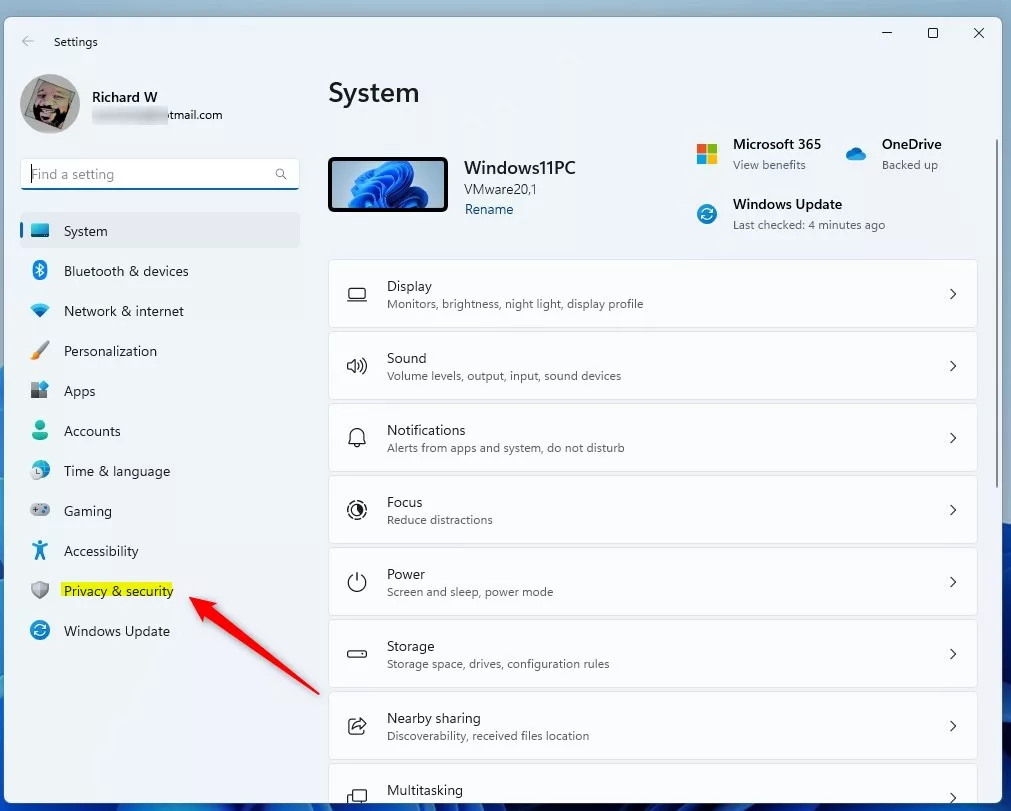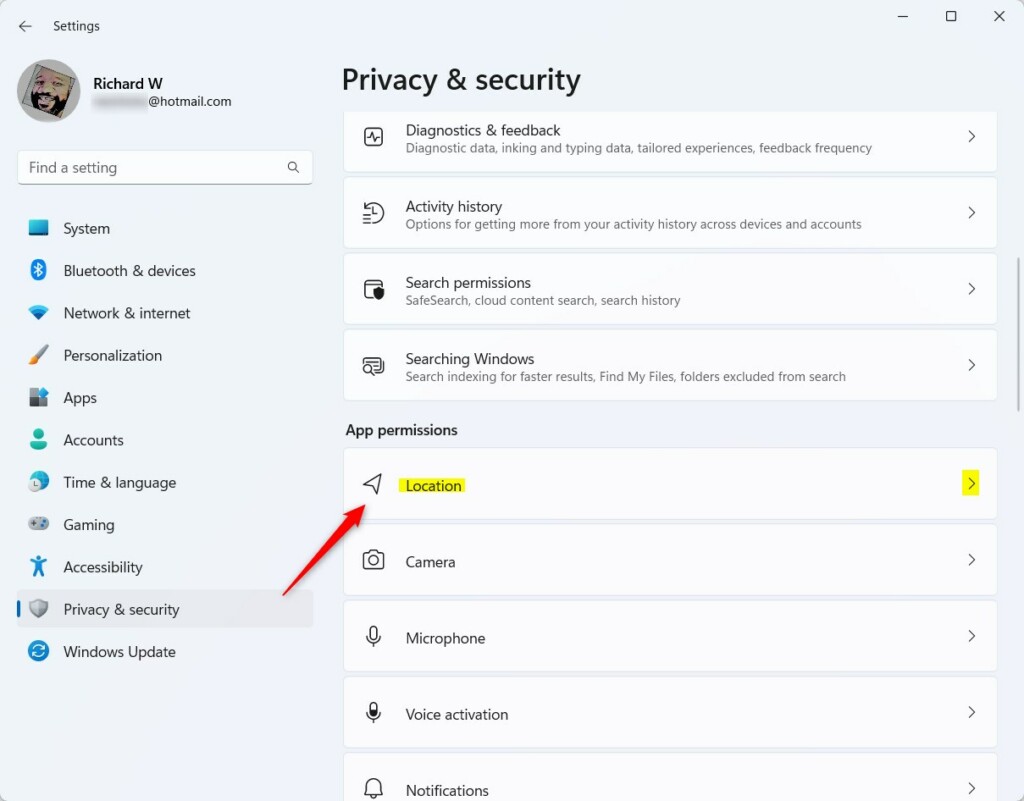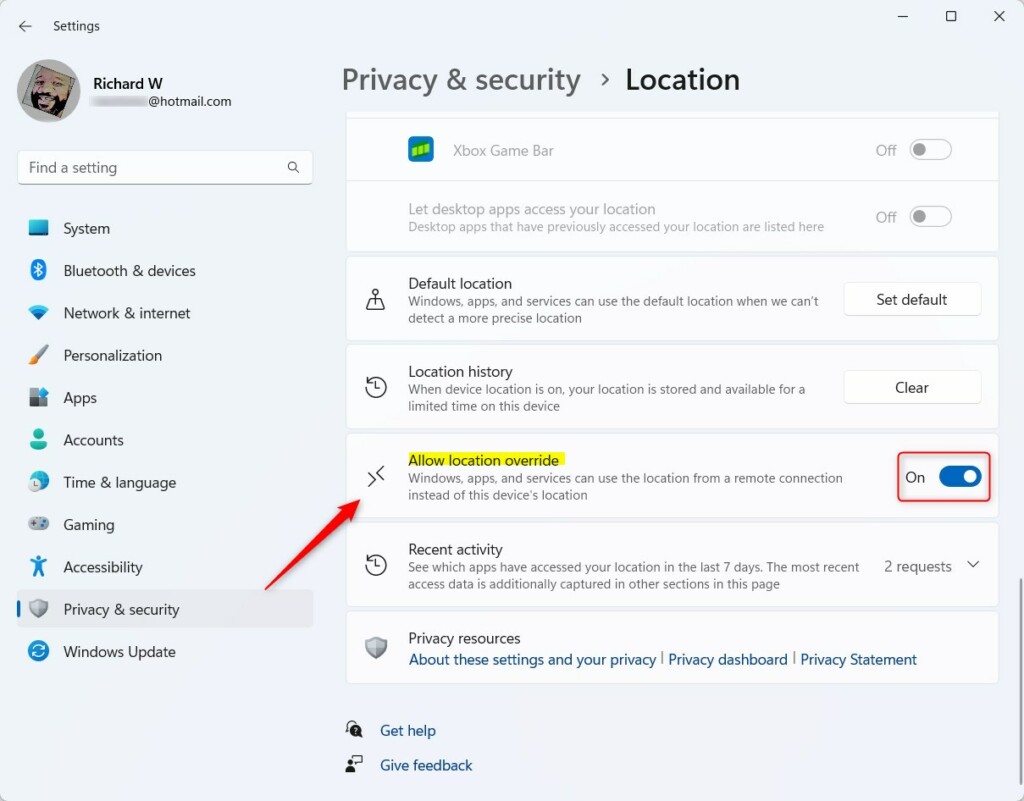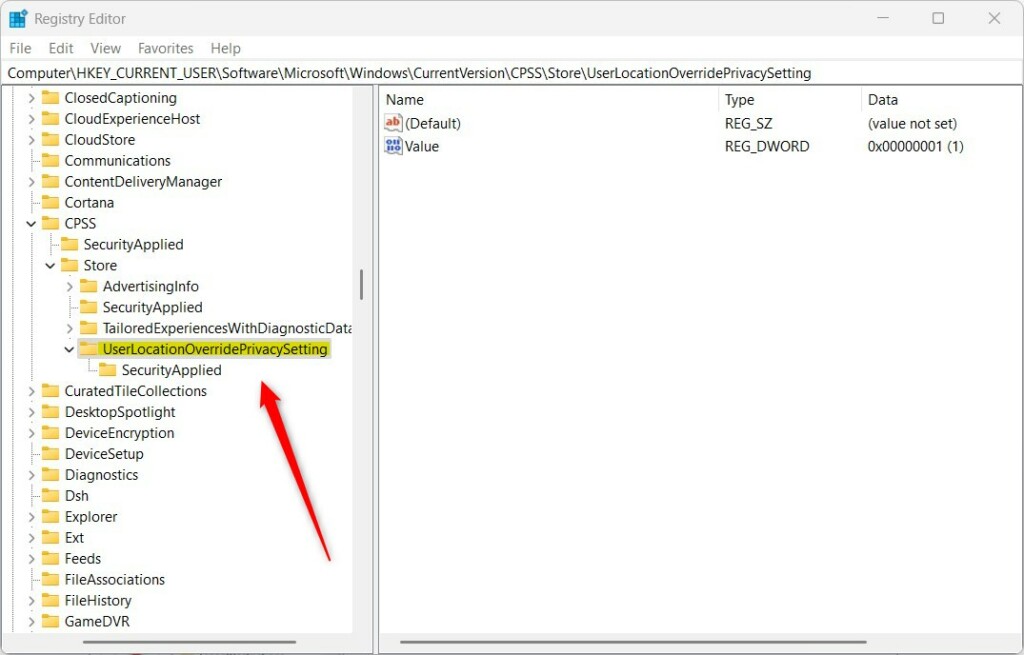This article explains enabling or disabling “Allow location override” in Windows 11.
Location service in Windows helps determine the precise geographic location of your Windows device. The precise location of your device allows apps to give you directions, show shops and restaurants near you, and more.
Microsoft uses wireless access point information, cellular tower information, and precise GPS to get your device’s precise location.
A new setting added to Windows allows users to turn on or off “Allow location override.” If turned on, Windows will be able to use the location from a remote connection instead of using the device location.
The “Allow location override” works in situations where instead of connecting to services closer to a remote server, the clients’ app can access that information close by using a host machine a virtual client is connected to.
For example, when using Remote Desktop, you can find local printers around your client device instead of near the server hosting the virtual machine you’ve connected to. You must first turn on location service in the local and remote devices for the “Allow location override” setting to work.
Additionally, the app to manage the remote connection should be allowed access to the use location feature.
Turn “Allow location override” on or off
As mentioned above, Windows has a location service feature that allows location override in situations where instead of connecting to services closer to a server, the clients can access that information close by using a host machine to which a virtual client is connected.
Here’s how to turn it on or off.
First, open the Windows Settings app.
You can do that by clicking on the Start menu and selecting Settings. Or press the keyboard shortcut (Windows key + I) to launch the Settings app.
When the Setting app opens, click the Privacy & security button on the left.

Please select the Location tile on the right to expand it.

On the Privacy & security -> Location setting pane, select the “Allow location override” tile. Then, toggle the switch button to the On position to enable it.
To disable it, toggle the button back to the Off position.

Close the Settings app when you are done.
Enable or disable “Allow location override” using the Registry Editor
Another way to enable or disable the “Allow location override” feature is to use the Windows Registry editor.
To do that, open the Windows Registry editor and navigate to the folder key below.
HKEY_CURRENT_USER\Software\Microsoft\Windows\CurrentVersion\CPSS\Store\UserLocationOverridePrivacySetting
If you don’t see the UserLocationOverridePrivacySetting folder key, right-click on the Store parent key, then create the subkey (UserLocationOverridePrivacySetting) folder.

Right-click the UserLocationOverridePrivacySetting folder key’s right pane and select New -> String Value. Type a new item named Value.
Double-click the new item you created (Value) and update the Value data:
- To allow location override, type 1
- To disable location override, type 0

That should do it. Restart your computer to apply the changes.
That should do it!
Reference:
Conclusion:
- Enabling or disabling “Allow location override” in Windows 11 can greatly impact your device’s interaction with location services.
- Whether allowing remote connections to dictate location information or utilizing the device’s physical location, Windows 11 offers flexibility.
- By following the steps outlined in this article, users can easily manage the “Allow location override” setting to suit their preferences and requirements.
- Users can refer to the Microsoft support page linked in the article for further reference or assistance.
- Your feedback is valuable; if you have any corrections or additional insights, we welcome your input in the comments section below.

Leave a Reply